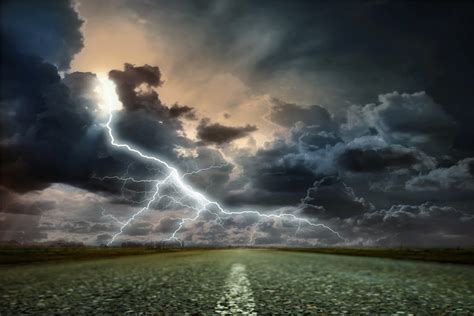Introduction
Tempestad, a Spanish word for “storm,” is a powerful force of nature that can bring both destruction and renewal. In English, the word “tempest” is often used to describe a violent storm, especially one that occurs at sea. Tempests have been a source of fascination and fear for centuries, inspiring countless works of literature, art, and music.

Characteristics of Tempests
Tempests are characterized by strong winds, heavy rain, and often thunder and lightning. They can form over land or water, and they can range in size from small, localized storms to massive, global events. The most powerful tempests are known as hurricanes, cyclones, or typhoons, depending on where they occur.
Causes of Tempests
Tempests are caused by the release of energy from the atmosphere. This energy can come from a variety of sources, including:
- Solar radiation: The sun’s heat warms the Earth’s surface, creating areas of high and low pressure. These pressure differences can lead to the formation of winds.
- Wind shear: Wind shear is the difference in wind speed or direction between two layers of the atmosphere. This can cause winds to become unstable and form storms.
- Moisture: Water vapor in the atmosphere can condense to form clouds and rain. This process releases heat, which can further fuel the storm.
- Instability: The Earth’s atmosphere is often unstable, meaning that small changes in temperature or pressure can lead to the formation of storms.
Impacts of Tempests
Tempests can have a devastating impact on human populations and ecosystems. They can cause:
- Property damage: High winds and heavy rain can damage or destroy buildings, bridges, and other infrastructure.
- Flooding: Tempests can cause rivers and lakes to overflow, flooding homes and businesses.
- Erosion: High winds and waves can erode beaches and coastal areas.
- Crop damage: Tempests can damage crops, leading to food shortages and economic losses.
- Power outages: High winds can damage power lines, causing power outages that can last for days or even weeks.
- Loss of life: Tempests can cause injuries and death, especially if people are caught in the path of the storm.
Forecasting and Tracking Tempests
Meteorologists use a variety of tools to forecast and track tempests. These tools include:
- Weather satellites: Weather satellites can track the movement of storms and provide information about their intensity.
- Radar: Radar can detect the location and intensity of precipitation.
- Buoys: Buoys can measure wind speed, wave height, and other weather conditions.
- Computer models: Computer models can simulate the behavior of the atmosphere and predict the path and intensity of storms.
Mitigating the Impacts of Tempests
There are a number of steps that can be taken to mitigate the impacts of tempests, including:
- Building codes: Building codes can require buildings to be constructed to withstand high winds and flooding.
- Flood control measures: Flood control measures, such as dams and levees, can help to prevent flooding.
- Emergency preparedness: Emergency preparedness plans can help communities to respond to and recover from tempests.
- Public education: Public education campaigns can help people to understand the risks of tempests and how to stay safe during a storm.
Conclusion
Tempests are powerful forces of nature that can have a significant impact on human populations and ecosystems. However, by understanding the causes and impacts of tempests, we can take steps to mitigate their effects and protect ourselves from harm.
Frequently Asked Questions
1. What is the difference between a tempest and a hurricane?
A tempest is a general term for a violent storm, while a hurricane is a specific type of tempest that occurs over warm ocean waters. Hurricanes are characterized by high winds, heavy rain, and a rotating center of low pressure.
2. What is the most powerful type of tempest?
The most powerful type of tempest is a super typhoon. Super typhoons have wind speeds of at least 150 miles per hour (240 kilometers per hour).
3. What are the most common impacts of tempests?
The most common impacts of tempests include property damage, flooding, erosion, crop damage, power outages, and loss of life.
4. What can be done to mitigate the impacts of tempests?
There are a number of steps that can be taken to mitigate the impacts of tempests, including building codes, flood control measures, emergency preparedness plans, and public education campaigns.
5. What is the future of tempest forecasting?
The future of tempest forecasting is bright. Meteorologists are developing new tools and techniques to improve the accuracy and timeliness of tempest forecasts. This will help communities to better prepare for and respond to tempests.
Additional Resources
- National Hurricane Center
- World Meteorological Organization
- United Nations Office for Disaster Risk Reduction
